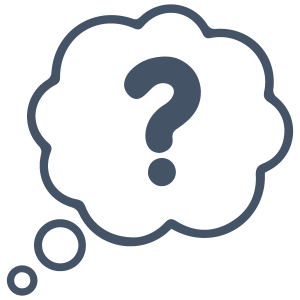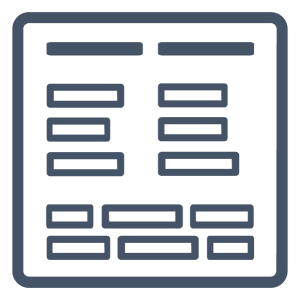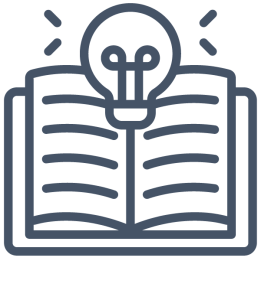Academic, popular, news, and social media sources

Overview
This week, we evaluate sources in terms of the authority of the author and any inherent bias that might be embedded in the creation of a source. This bias can be reflected in the creation and use of facts as well as misinformation, disinformation, and malinformation. The latter types of information reflect in part the degree to which incorrect information is intended to harm those with whom it is shared.
In addition, we evaluate sources in terms of the author and the context (primary sources can be categorized in many different ways, including by the author and the context for which it was created. This week, we will learn how to categorize sources by audience (i.e., who is using particular types of sources).
Academic, popular, news, and social media sources are categories that identify sources in terms of the content (the information presented) and audience (individuals or groups for which the information is intended).
Categorizing sources is an important step in the process of evaluating sources to determine if they are appropriate for a given research task. In addition, it is also important to understand what types of sources we could use and in what context.
Typically, your instructor will identify the types of sources that are required for a given academic project. When you are searching for sources, you must understand the type of source you are required to use and differentiate between the various sources you find during your information searches so that you choose the right types of materials for your project.
Readings
Core readings & videos (all groups)
Attridge Bufton, M. (2023). Do we take shelter? Evaluating “high stakes” information. Gamer handbook. eCampus Ontario Open Library. https://ecampusontario.pressbooks.pub/gamerguidedowetakeshelter/
- Chapter 1: Learning outcomes
- Chapter 2: Assignments
- Chapter 3: Game prep
- Game website: https://dowetakeshelter.interdisciplinarylib.ca/households/
Graff, G., & Birkenstein, C. (2021). “They say/I Say.” The moves that matter in academic writing (5th ed.). W.W. Norton & Company.
- Chapter 19: Help me understand …” When your “They say” is a bot.
Gravel, E. (2022). Killer underwear invasion!: How to spot fake news, disinformation & conspiracy theories. Chronicle Books LLC, 2022.
Rose-Wiles, L. M. (2024). The framing of authority in the ACRL framework on information literacy: multidisciplinary perspectives on truth, authority, expertise and belief. Reference Services Review, 52(2), 202–217. https://doi.org/10.1108/RSR-02-2024-0003
Reading Club group readings
Group 1
Maccallum, L. (n.d.). Choosing and using sources: A guide to academic research. (1st Canadian edition). Ohio State University. https://caul-cbua.pressbooks.pub/choosingsources/.
- Chapter 25: Thinking critically about sources.
- Chapter 26: Evaluating for relevancy.
- Chapter 27: Evaluating for credibility.
Groups 2 & 4
Yancy McGuire, S. with McGuire, S. (2018). Teach yourself how to learn. Stylus Publishing.
- Chapter 7: How your emotions affect your motivation and learning
Group 3
Canadian Centre for Cybersecurity. (2024). How to identify misinformation, disinformation, and malinformation. https://www.cyber.gc.ca/en/guidance/how-identify-misinformation-disinformation-and-malinformation-itsap00300
Group 5
Maccallum, L. (n.d.). Choosing and using sources: A guide to academic research. (1st Canadian edition). Ohio State University. https://caul-cbua.pressbooks.pub/choosingsources/.
- Chapter 29: Author and publisher.
- Chapter 30: Degree of bias.
- Chapter 31: Recognition from others.
- Chapter 32: Thoroughness.
Before class activities
 Key questions to ask while reading and watching
Key questions to ask while reading and watching
- How do I define academic, popular, news, and social media sources: how are these sources similar and/or different?
- When would I use academic, popular, news, and social media sources? When would I not use them?
- Why would my professor require that I use only academic sources for an assignment?
 “Pile of words”: Group and label key concepts
“Pile of words”: Group and label key concepts
Organize into two lists of similar terms and label each list (include definition of each label).
Remember: You may already understand some of these ideas relatively well and others may be new to you—you are encouraged to look up (e.g., in a dictionary or encyclopedia) the unfamiliar concepts in order to create your lists.
Make note of your reasons for grouping the ideas together as you will share them in class. These are self-paced individual activities, for which there are no right or wrong answers. The instructor will not grade this work.
 Predict a learning outcome
Predict a learning outcome
Reading class activities
Share the results of your pre-class activities before class activities and respond to additional prompts provided by your instructor(s).
After class activities
After class, annotate each reading for key ideas. For videos and podcasts, you can annotate the transcript.
Summarize the author’s key ideas from each reading.
Highlight the following information:
- Purpose of the reading;
- Scope (the extent of the study);
- Thesis (the main argument[s]);
- Method (research method if applicable);
- Outcome(s) and conclusion.
Respond to the following statements about the readings: do you agree or disagree with the statement and why?
Statement 1
“If people stop believing in real experts and scientists … People will make bad decisions. These decision might be bad for our health. Bad for the environment. And bad for our democracies.” (Gravel, 2022).
Statement 2
“In order to evaluate a source, you have to answer two questions about it:
-
- Is this source relevant to my research question?
- Is this a credible source– a source my audience and I should be able to believe?” (Maccallum, n.d.).
Did these readings provide any inspiration or insights you can use in this or any of your other classes? If yes, what is the inspiration and/or what are the insights?

